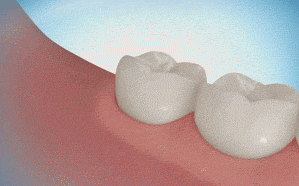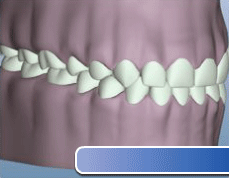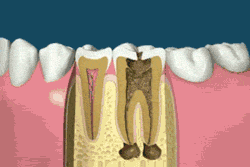

A dental extraction is the procedure of removing a tooth. Teeth extractions are necessary when there is no hope in repairing the tooth. Sometimes due to severe decay or infection, it is best to remove the tooth.This may be the best option to choose from if a tooth has been broken, deteriorated by decay, or by gum disease. Ideally, after the tooth is extracted, an implant will be put in place of it and a crown will go on top of the implant, creating the appearance of a healthy tooth.

A properly aligned wisdom tooth surrounded by healthy gum tissue does not generally require surgical attention. Unfortunately, the third molars tend to grow in sideways, remaining partially or completely trapped under the gum and bone, known as impacted wisdom teeth. When this happens extraction becomes necessary.

Whether to treat gum disease or for cosmetic reasons we offer many types of gum surgery that can help:
Pocket reduction: (also known as gingival flap surgery)
In this procedure, your surgeon folds back the gums and removes bacteria. The periodontist (gum specialist) secures the gum tissue against your teeth, rather than allowing it to grow back on its own.
Regeneration: In this procedure, your periodontist folds back the gums and removes disease-causing bacteria, then inserts bone grafts, membranes, or tissue-stimulating proteins (or any combination of the three) to encourage your gum tissues to regenerate and fit snugly around the teeth again.
Crown Lengthening: In this procedure, your periodontist removes an overgrowth of gum tissue from your teeth, making your teeth appear longer. This procedure is used for cosmetic effects as well as to treat gum disease.
Soft tissue graft: In this procedure, your periodontist takes sample tissue from elsewhere in your mouth and attaches it to your gums to replace gum tissue that has receded or has been removed due to gum disease. This procedure is often used for cosmetic purposes as well as to treat gum disease because it covers areas where the root is becoming exposed and improves the appearance of the teeth.

A root canal is a dental procedure used when a cavity in the tooth has spread down to the root of your tooth and into your gum, causing it to become infected or inflamed. When getting a root canal, it is first necessary to remove the infected root, and replace it with a permanent filling. The dentist will first, numb the tooth; second, remove the tooth’s root and third, fill it with a temporary filling until a permanent filling or crown is inserted. A crown is usually placed on top after a root canal has been filled. The crown will be specifically created for your mouth to provide an aesthetically pleasing result

Lorem ipsum dolor sit amet, consectetur adipisicing elit. Autem laudantium in adipisci ipsa optio quas id excepturi non, eos cupiditate, necessitatibus sapiente illo error. Vero adipisci quidem aut itaque labore.
